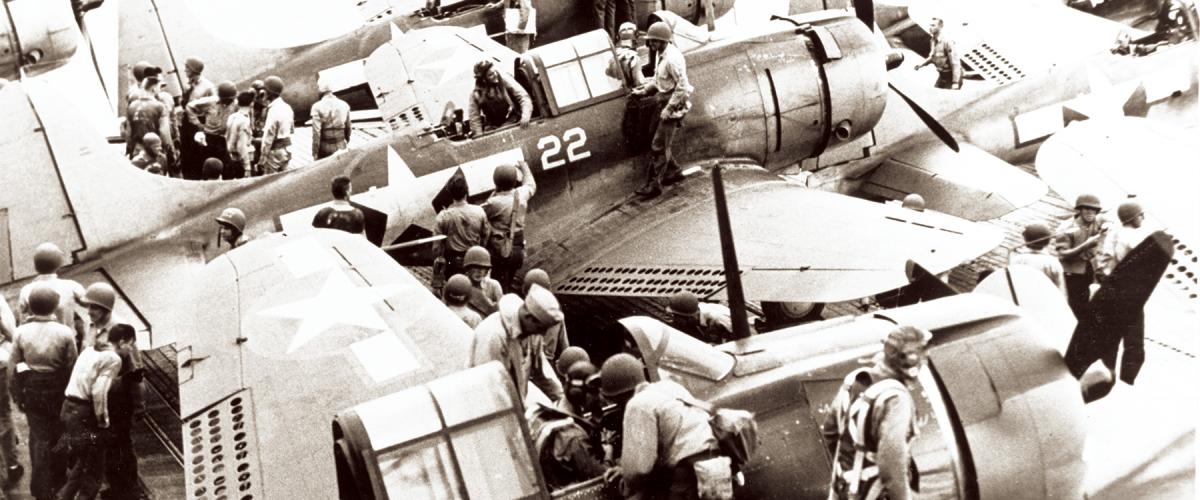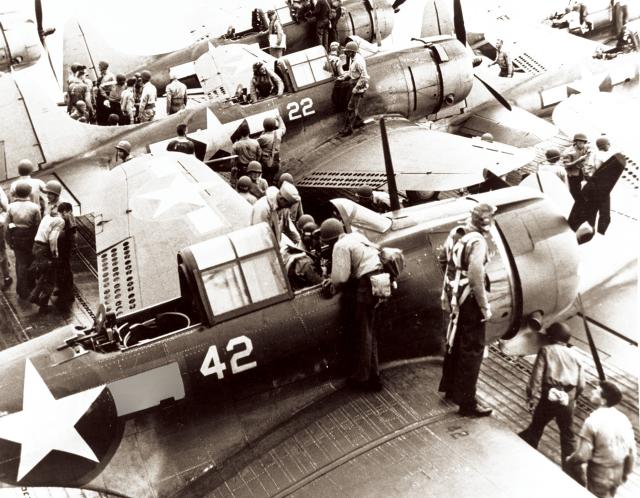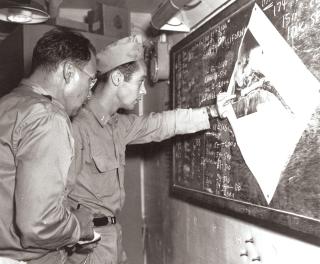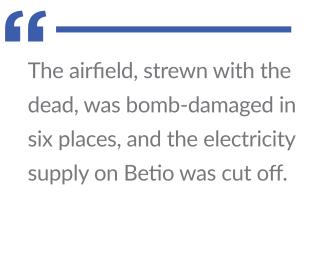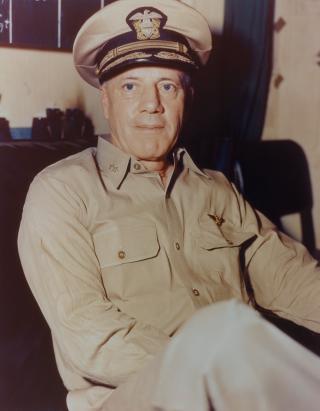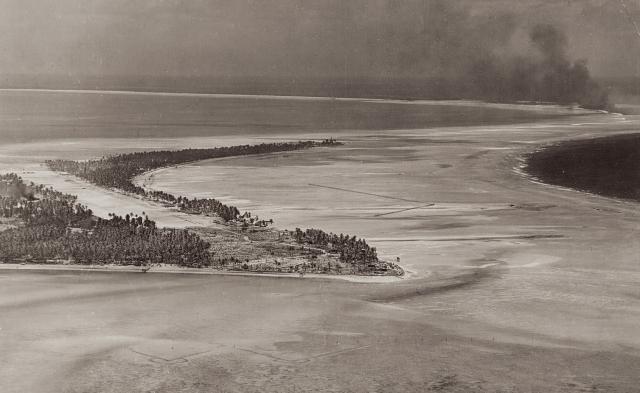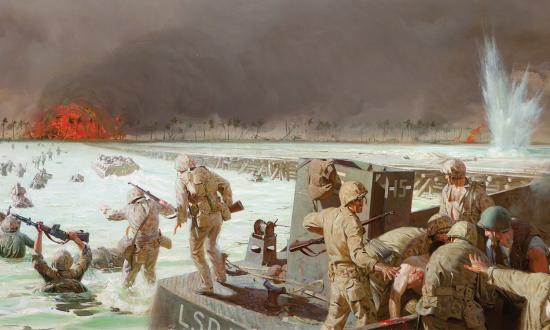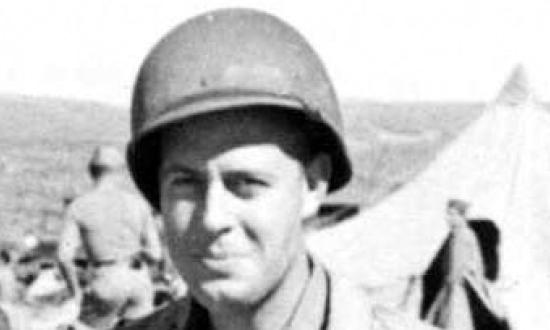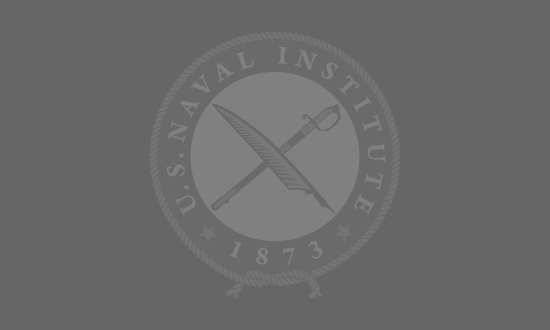Little has been written about the two-day attack against Tarawa that took place two months before U.S. Marines landed there, unleashing the Battle of Tarawa. It is now possible to reveal a fuller picture of the events of those two days by incorporating previously unavailable Japanese information. This information comes from some of the few Japanese survivors of the Battle of Tarawa and from members of the Japanese Special Naval Landing Forces, who were stationed on Tarawa for many months but then were transferred from the island a month or two before the battle started. One new piece of information we learn is that, unknown to the U.S. military, the Tarawa raid also brought an end to the development of an important Japanese defense weapon that was under construction at the time—a weapon that would have made the Marines’ landing much more hazardous and been the cause of increased Marine Corps casualties.
The Gilbert Islands were a little-known British colony in the Central Pacific when Japan entered World War II. The islands came into world focus when, two days after their attack on Pearl Harbor, the Japanese captured the northern Gilberts and began building a seaplane base at Makin Island. Nine months later, in September 1942, Imperial Japanese Navy forces seized more Gilbert Islands, occupying the atolls of Tarawa and Abemama and the high coral island of Nauru, west of the Gilbert Group. They constructed an airfield on Nauru and a two-strip airfield and fortifications on Betio Island at Tarawa.
Central Pacific Counterattack
By staging through Funafuti in the Ellice Islands, it had been possible for the U.S. Army’s 7th Air Force to strike twice against Nauru and Tarawa in April 1943. U.S. offensive operations from Funafuti had commenced with a mission on the night of 21 April, when 22 B-24 bombers took off on the first strike against Nauru. Their commander, Major General W. H. Hale, had led them personally to Funafuti from Hawaii. It was a successful raid, and the planes returned safely to Funafuti.
But that night, the Japanese retaliated by bombing Funafuti airbase, damaging several of the B-24s parked on the airfield. For the attack on Tarawa two nights later, only 12 of Hale’s 22 planes were still capable of making the attack. However, it was a successful strike. They returned to Funafuti the next day and the same afternoon headed back to Hawaii via Canton Island.
In July, the Joint Chiefs of Staff ordered amphibious operations against the Gilbert Islands, with a target date of 1 December. This was to be followed in February 1944 with an assault against the Marshall Islands. It was decided to first stage a carrier strike against Tarawa in coordination with the U.S. Army Air Forces (AAF) bombing attacks. For that purpose, the AAF supplied Task Force 15 (TF-15), under Rear Admiral Charles A. Pownall, with two squadrons of B-24 bombers.
The raid of 18–19 September 1943 was a combined attack by TF-15, a fast-carrier raid built around the carriers USS Lexington (CV-16), Princeton (CVL-23), and Belleau Wood (CVL-24), with a 7th AF heavy bomber attack using the B-24 Liberators.
From the AAF perspective, the attack was successful in destroying Japanese aircraft and airbase facilities at the time when the AAF was developing new bases in the northern Ellice Islands, closer to Tarawa. They wanted to minimize attacks from Tarawa against these bases, especially while they were under construction. The U.S. Navy judged its part in the TF-15 attack as a success in damaging the Tarawa defenses, destroying Japanese aircraft, and killing enemy soldiers. The most important prize of the raids was said to be the set of aerial photographs obtained of the lagoon coast of Betio Island. This was valuable in planning the Marines’ assault on Tarawa as well as any future AAF bombing attacks.
The B-24 Factor
The attack began before midnight on the night of the 18 September with an AAF raid. Twelve B-24 Liberator bombers were stationed at Canton Island under the command of General Truman H. Landon. As Canton is more than 1,000 miles from Tarawa, these planes were moved to Funafuti in the Ellice Islands to bring them within a roughly 700-mile range of Tarawa. There they joined the 12 B-24s of the Funafuti Air Group under Marine Corps Brigadier General Harold D. Campbell, making a total of 24 aircraft.
Of the 24 planes that set out to bomb Tarawa, only 18 managed to make it to the target and drop their bombs. Japanese records reveal that, on the ground, Japanese radar detected the B-24s approaching Betio over the ocean from the west, and a siren sounded to alert them for an air-to-ground combat situation. Their Southern High-Angle Battery counterattacked and shot down one B-24, which crashed into the northern waters of Tarawa lagoon, and another B-24, the crash site of which was not known. The Japanese also had 15 Zero fighters in the air above Betio, and these shot down a third B-24.
The Japanese estimate of damages was that approximately 100 bombs, including incendiaries, had fallen on the island. Buildings, including a food store, were destroyed or damaged. The airfield runway also received several bomb hits, and several fuel and ammunition dumps were blown up. The AAF lost a total of four planes in the attack, three of which are accounted for in the Japanese record. Another of the lost B-24s was a plane with the name “Wake Island Sleeper.” This aircraft had received damage from the Zero fighters over Tarawa and began to leak fuel. While attempting to make it back to Funafuti, it crash-landed 50 yards off the beach at Nanumea Island, where the Seabees had commenced building an airbase, in the northern Ellice Islands some 200 miles north of Funafuti. The crew escaped without injury, but the plane burst into flames and was destroyed.
TF-15 on the Attack
Approximately one hour after the AAF raid had ended, at 0500 on 19 September, Japanese radar again detected aircraft approaching Tarawa. These were from the carrier Lexington, which was 50 miles from Betio. The Lexington had launched 22 Hellcat fighters, 12 Dauntless dive-bombers, and 18 Grumman TBF Avengers against Tarawa. The aircraft were grouped into five or six small formations. The Japanese began firing at them with 13-mm machine guns and rifles. The air attack consisted of medium-altitude bombing, low-level torpedo bombing, and low-altitude fighter attacks, sweeping the ground with machine-gun fire. The fighting became a furious shootout between air and ground.
The Japanese claimed two American aircraft were shot down. Some of the Japanese barracks were burned down, as were some of their gun batteries. An arsenal of the Field Fire Artillery Base, in the northwest corner of Betio, received a direct hit and exploded, killing several men.
After one hour, the Lexington launched more planes—eight fighters and ten bombers. The Princeton also sent 15 planes to Tarawa; the Belleau Wood sent seven torpedo bombers. Throughout the morning of the 19th, more planes launched from all three carriers. The damage and casualties on the ground increased. Japanese witnesses say the total number of buildings destroyed or damaged rose to 33. The airfield, strewn with the dead, was bomb-damaged in six places, and the electricity supply on Betio was cut off. The Japanese guns now had to be operated manually, and it was impossible to track aircraft fast enough by hand.
The Japanese tally of plane losses on the ground was nine Nell bombers destroyed out of a total of 14. One of their Zero fighters crashed into a bomb crater when landing at Betio and was wrecked. U.S. estimates were that a total of ten Japanese aircraft were destroyed on the ground: eight Nell bombers, one Betty bomber, and a Val dive bomber. Around noon, five planes from the Lexington attacked Bairiki Island, two and a half miles east of Betio. They bombed the small island where drums of aviation gasoline were stored and set off a huge explosion.
A Fearful ‘Sea of Fire’ in the Making
At the time of the raid against Tarawa, the Japanese had commenced work on constructing what they called their “Sea of Fire” defense weapon. Working at times of low tide, they had been burying drums of aviation gasoline below the high-water mark along the lagoon beaches of Betio. They planned to screen the lagoon landing beaches with a line of drums that would have covered the beaches that the Marines soon would be naming Red Beaches #1, #2, and #3. If a Marine landing was to take place on these beaches, the Japanese intended to release the fuel, which would float to the surface of the water; when ignited, it would turn into that “sea of fire.” It was hoped this would prevent Marines from landing on these beaches and seriously injure or kill any who were in the area at the time.
Obviously, this was a lethal weapon, potentially capable of inflicting a high number of casualties. Fortunately for the U.S. Marine landing, the construction of the Sea of Fire was never completed. Some of the fuel drums that were already in place were set on fire by the action of TF-15, and an area of fire on the lagoon water was seen around the Burns Philp Wharf area. The weapon was never completed, because the raid had destroyed the gasoline that was required for it.
Several small fuel dumps of gasoline stored in drums were destroyed by TF-15: one in the area west of the main runway (above the mass grave site where the New Zealand Coastwatchers and other executed Europeans were buried) and another located between the two runways. But the fuel dump on Bairiki Island was probably the most serious loss for the Japanese. It was set on fire by machine-gun strafing from the Lexington planes, and there was a huge explosion; a Japanese witness described it as if “the moon exploded.” He stated that thousands of drums of fuel were destroyed.
In addition to Tarawa, the Japanese bases at Abemama and Makin also were hit by TF-15, which succeeded in destroying aircraft and destroying or damaging facilities there.
Makin and Abemama
The attack against Makin was specifically directed at the seaplane base, to destroy patrol aircraft and any such installations as might be found there. Ten aircraft, Hellcat fighters and Devastator torpedo bombers, launched from the Princeton at 1530. Three flying boats were set on fire by strafing while they were on the water.
The damage suffered by the Japanese amounted to two Emily (Kawanishi H8K2) flying boats sunk at their moorings in the lagoon and a third one moderately damaged. Seventeen Japanese were killed, with another 11 missing in action and five seriously injured. A building at the foot of On Chong’s wharf, thought to be a radio station, also was bombed. Eight 500-pound bombs were dropped, but damage to the building was unknown. The attacking planes encountered only light antiaircraft fire, and none were damaged.
Pilots on the Abemama strike reported that the only damage inflicted was the destruction of a bridge connecting two of the islands within the atoll. There were no aircraft or marine vessels found there, and the Japanese had not constructed any airfields on Abemama.
After the raid the Japanese improved their defense procedures, including the decentralization of storage for ammunition, drinking water, and fuel. Additional training was undertaken in gun operation and repair procedures, and gun blind-spots were removed.
Overall, the TF-15 raid was judged a success by the Americans, even though it was realized that the Tarawa airbase would not be put out of service for any length of time. Now, with the additional knowledge that the “Sea of Fire” weapon also was destroyed by the raid, it must be considered a greater success than was known at the time.
Sources:
“Action Report, Task Force 15, October 3, 1943, US Pacific Fleet,” Record Group 313.5, National Archives and Records Administration, College Park, MD.
William H. Bartsch, “Operation Galvanic,” After the Battle no. 15 (1977): 1–33.
Wesley Frank Craven and James Lea Cate, The Army Air Forces in World War II, vol. 4, The Pacific: Guadalcanal to Saipan, August 1942 to July 1944 (University of Chicago Press, 1950).
Taniura Hideo, Tarawa, Makin no Tatakai: Kaigun Rikusentai Girubai Senki (Tokyo: Soshisya, 2000).
Peter McQuarrie, The Gilbert Islands in World War Two (Oakland, CA: Masalai Press, 2012).



